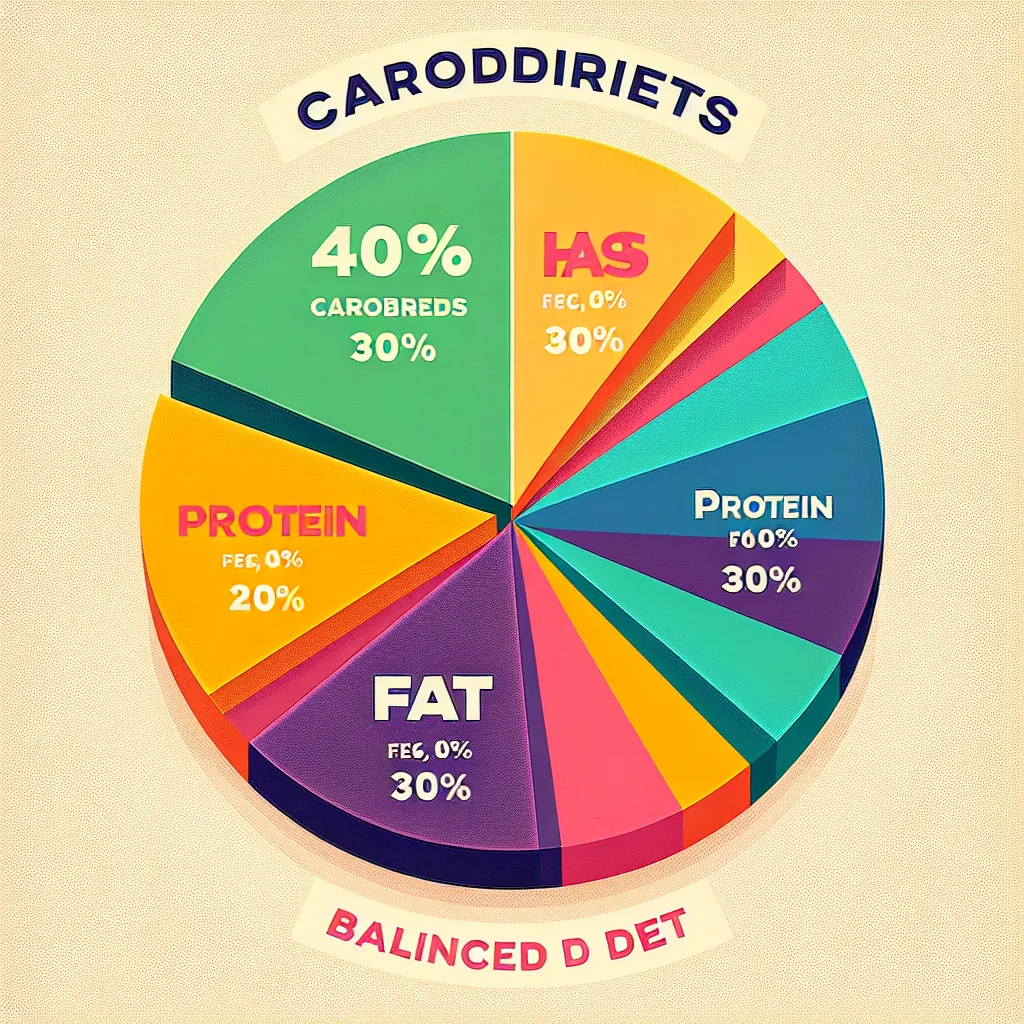Macronutrient ratio /ˌmækrəʊˈnjuːtriənt ˈreɪʃiəʊ/ (noun): The proportion of calories derived from carbohydrates, proteins, and fats in a person’s diet.
1. Understanding the Context of “Macronutrient Ratio”
Real-life Examples
-
“The dietitian recommended adjusting my macronutrient ratio to 40% carbohydrates, 30% protein, and 30% fat to support my fitness goals.”
Analysis: This example demonstrates how the term is used in a nutritional consultation setting, showing its practical application in personalized diet planning.
-
“Athletes often manipulate their macronutrient ratio depending on their training phase, with endurance athletes typically consuming a higher percentage of carbohydrates.”
Analysis: Here, we see the term used in the context of sports nutrition, highlighting how macronutrient ratios can be tailored for specific athletic needs.
-
“The ketogenic diet is characterized by a macronutrient ratio that is high in fat, moderate in protein, and very low in carbohydrates.”
Analysis: This example illustrates how the term is used to describe specific diet types, in this case, the ketogenic diet.
-
“When meal planning, I always consider the macronutrient ratio to ensure I’m getting a balanced intake of nutrients throughout the day.”
Analysis: This sentence shows how individuals might use the concept in their daily meal planning, emphasizing its relevance in everyday nutrition.
-
“Research suggests that the optimal macronutrient ratio for weight loss may vary among individuals, depending on factors such as age, gender, and activity level.”
Analysis: This example demonstrates the use of the term in scientific contexts, highlighting the complexity and individuality of nutrition science.
Common Contexts
The term “macronutrient ratio” is frequently encountered in:
- Nutrition and dietetics
- Fitness and sports science
- Weight management programs
- Medical research papers
- Health and wellness blogs
Frequency in IELTS
In IELTS, “macronutrient ratio” may appear in:
- Reading passages about health, nutrition, or sports science (high frequency)
- Writing Task 2 essays on diet and health topics (moderate frequency)
- Listening sections discussing dietary advice or nutritional studies (moderate frequency)
- Speaking Part 3 questions related to health and lifestyle (low to moderate frequency)
2. Vocabulary Analysis
Word Structure
- Macro- (prefix): large-scale
- Nutrient (root): a substance that provides nourishment
- Ratio (root): the quantitative relation between two amounts
Synonyms and Antonyms
Synonyms:
- Nutrient balance
- Macronutrient distribution
- Dietary proportion
Antonyms:
- Micronutrient composition
- Single-nutrient focus
3. Memorization Techniques
Mind Map
Create a mind map with “Macronutrient Ratio” at the center, branching out to:
- Types of macronutrients (Carbohydrates, Proteins, Fats)
- Measurement units (Percentages, Grams)
- Applications (Weight loss, Muscle gain, Athletic performance)
- Related concepts (Calorie counting, Meal planning, Nutritional balance)
Mnemonic Story
Imagine a chef named Mac (Macronutrient) who always cooks with three main ingredients: Carla (Carbohydrates), Polly (Proteins), and Fiona (Fats). Mac’s secret to delicious meals is finding the perfect Ratio of these three friends in every dish he creates.

4. Practical Application Exercises
Writing Task
Write a paragraph explaining how understanding macronutrient ratios can benefit someone trying to improve their diet. Use the term “macronutrient ratio” at least twice in your response.
Example:
“Understanding macronutrient ratios is crucial for anyone looking to improve their diet. By adjusting the balance of carbohydrates, proteins, and fats, individuals can tailor their nutrition to support specific health goals. For instance, an athlete might require a macronutrient ratio higher in carbohydrates to fuel intense training sessions, while someone aiming for weight loss might benefit from a ratio that emphasizes protein to promote satiety and preserve muscle mass.”
Speaking Practice
Prepare a 1-minute speech on the importance of balanced nutrition, incorporating the term “macronutrient ratio.” Use this as practice for IELTS Speaking Part 2.
Key points to cover:
- Definition of macronutrient ratio
- Why it’s important for health
- How it varies for different health goals
- Personal experience or opinion on balanced nutrition
IELTS-style Reading Comprehension
Read the following passage and answer the questions below:
“Recent studies have shown that the ideal macronutrient ratio for weight loss is not one-size-fits-all. While traditional dietary advice often recommends a ratio of 50% carbohydrates, 30% protein, and 20% fat, researchers now suggest that individual factors such as age, gender, body composition, and activity level play a significant role in determining the most effective macronutrient distribution. Some individuals may thrive on a higher protein intake, while others might benefit from a higher proportion of healthy fats. This personalized approach to macronutrient ratios has led to more effective and sustainable weight loss outcomes in clinical trials.”
Questions:
- What is the traditional macronutrient ratio mentioned in the passage?
- List two factors that can influence the ideal macronutrient ratio for an individual.
- According to the passage, what has been the result of using personalized macronutrient ratios?
5. Conclusion
Mastering the concept of “macronutrient ratio” is essential for anyone interested in nutrition, health, or fitness. This term not only enhances your vocabulary for the IELTS exam but also provides valuable knowledge for personal health management. Remember to practice using this term in various contexts to solidify your understanding and improve your ability to discuss nutrition-related topics fluently.
We encourage you to apply this knowledge by analyzing your own diet or discussing macronutrient ratios with friends and family. If you have any questions about using this term or want to share your experiences with learning nutrition vocabulary, please leave a comment below. Your engagement will help reinforce your learning and might assist others in their IELTS preparation journey.
For more insights on nutrition and diet-related vocabulary, you might find our article on what is a balanced diet helpful. Additionally, if you’re interested in exploring related topics, our piece on protein shakes offers further vocabulary and concepts relevant to nutrition and fitness.